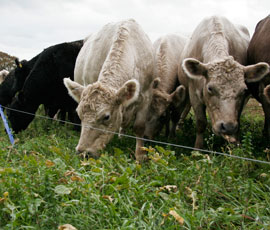Livestock Monthly Must Do’s: October

1. Improve marketing returns
Pig producers and stockmen should find out about pig industry training courses and workshops in their area, says Samantha Bowsher, BPEX skills manager. BPEX has published a training and qualifications brochure to summarise all the practical and management opportunities on offer. Skilled and enthusiastic people are the most important part of a successful pig business and the pig industry has a range of ways to train and learn new skills at every level, from new stockperson through to pig unit manager.
Producers can download a copy of the brochure or call Samantha Bowsher on 07976 980 753.
2. Review pig marketing contracts
It’s worth producers reviewing their pig marketing contract on a regular basis – at least every quarter – and taking into account current carcass grading, farm location and production system, says Stephen Winfield, BPEX transfer manager. It’s important for a pig business to keep focused on improving returns from its finished pigs, making sure they have an appropriate contract and are producing as many pigs to the optimum grading specification as possible. BPEX Action for Productivity factsheet 22 has more guidance on improving pig marketing return. Download it here.
3. Assess your forage stocks
Now is the ideal time to take stock of what winter feed you have available, advises Liz Genever of EBLEX.
“Calculate quantities of baled silage and silage in clamps, being sure to carry out some forage analysis as the dry matter (DM) content will be higher this year due to the better weather,” she said.
“Assess grazing fields and make a rough estimate of kg DM/ha. The available feed is the difference between the amount of grass present and the residual the cattle and sheep won’t eat.
“For forage crops, the goal is also to estimate the dry matter available.”
4. Make the most of oats
Following a 53% increase in land allocated to oats in England, the quantity destined for the feed market is likely to increase, according to EBLEX’s Dylan Laws.
“Oats are an ideal component for transition rations, such as moving cattle to a finishing diet or creep-feeding calves,” he said.
“Its relatively high fibre content when compared to other cereals means it helps the rumen adapt to high-cereal diets and reduce the risk of acidosis.
“A recent EBLEX trial found that replacing up to 50% of rolled barley in a finishing ration with rolled oats had no negative effect on the growth rate of steers.”
